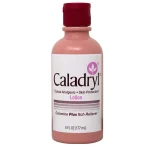Millions of people worldwide suffer with Attention Deficit Hyperactivity Disorder (ADHD), which causes problems with impulsivity, hyperactivity, and focus. While medicine and therapy are common components of standard therapies, attention has recently been drawn to a novel tool: ADHD glasses. These glasses are said to lessen visual overstimulation, decrease distractions, and increase attention.
But do glasses for ADHD actually work? And can they have an impact on how symptoms of ADHD are managed? This post will discuss the advantages, how they work, and if they’re worth the attempt.
What Are ADHD Glasses?
They are specialized eyeglasses made to help people with ADHD focus better and reduce sensory disturbances. They reduce visual overstimulation, which frequently overwhelms those with ADHD, by filtering light or by utilizing tinted lenses.
See Also: Lifestyle Tint for Mindful Living
Key Features:
- Tinted Lenses: Diminish sensitivity to intense light and glare.
- Prism Lenses: Modify the way light enters the eyes to improve spatial awareness and attention.
- Neuro-Optics Technology: Intended to lessen overstimulation and balance visual input.
How Do ADHD Glasses Work?
Visual processing problems, which are prevalent in people with ADHD, are the main focus of ADHD glasses.
1. Light Filtering:
Some light wavelengths, particularly blue light, have the potential to be overstimulating. These wavelengths are filtered by ADHD glasses, which eases stress and increases focus.
2. Improved Visual Tracking:
To improve visual tracking and lessen distractions from straying eye movements, certain ADHD glasses use prism lenses to change how light enters the eye.
3. Sensory Overload Reduction:
They help lessen overstimulation from bright lights, crowded spaces, or electronic devices by stabilizing visual input.
See Also: What is in muffins vitamins
Benefits of ADHD Glasses
There are a number of possible advantages to wearing these, though individual outcomes may differ.
1. Enhanced Focus:
People may stay focused on things for longer when there are fewer visual distractions.
2. Reduced Eye Strain:
Tinted lenses reduce eye strain from extended screen use or bright lighting.
3. Improved Reading and Learning:
Improved visual tracking lessens eye strain during study periods and aids in reading comprehension.
4. Lower Anxiety Levels:
They can have a soothing impact and lessen anxiety symptoms by reducing sensory overload.
5. Better Sleep Patterns:
Blue light-blocking glasses can increase melatonin production, which will help with sleep quality.
Do ADHD Glasses Really Work?
Depending on the person and their unique symptoms, different ADHD glasses have different levels of effectiveness.
- Success Stories: A lot of people mention feeling less overstimulated, having better attention, and having less eye strain.
- Scientific Evidence: Although studies are still being conducted, some indicate that light filtering and visual therapy may help people with ADHD.
- User Feedback: Online communitiessuch as ADHD Glasses Reddit, where some users praise their usefulness while others report little to no change.
Who Can Benefit from ADHD Glasses?
- Pupils who have trouble concentrating when reading or doing their homework.
- Adults using digital screens for extended periods of time.
- People who are overstimulated and light-sensitive.
Are ADHD Glasses Suitable for Kids?
Children who struggle with focus, visual tracking, or sensory overload may find ADHD glasses especially beneficial.
Benefits for Kids:
- Benefits for children include increased focus in the classroom.
- Improved reading skills.
- Fewer visual cues to divert attention.
Parental Tips:
- See an eye care professional before buying children’s ADHD glasses.
- For vigorous use, make sure the glasses are both comfortable and long-lasting.
What Color Glasses Help with ADHD?
The functions of various lens hues vary:
- Blue Lenses: Reduce glare and screen strain.
- Yellow Lenses: Enhance contrast and reduce visual noise.
- Rose-Tinted Lenses: Minimize overstimulation and create a calming effect.
The sensitivity and requirements of the individual determine the hue of the lens.
Conclusion
For those who struggle with visual overstimulation, attention problems, and sensory overload brought on by ADHD, glasses are a promising tool. They can be a useful supplement to an overall ADHD management strategy, even if they might not be effective for everyone.
To find out if ADHD glasses are right for you or your child, speak with an optometrist or other eye care professional.
See Also: Non Healing Wound: Causes, Symptoms, Treatment, and Prevention
FAQs
Do ADHD glasses really work?
Eye strain, attention, and visual overstimulation can all be lessened with the use of ADHD glasses. Their efficacy differs from person to person, nevertheless.
What are the skills of ADHD people?
Individuals with ADHD frequently possess exceptional creativity, problem-solving, and unconventional thinking skills. Additionally, they could be more energetic and capable of hyperfocusing on topics of interest.
What color glasses help with ADHD?
Rose-tinted lenses limit overstimulation, yellow lenses improve contrast, and blue lenses reduce glare. Each color has its own advantages.
What does ADHD anxiety feel like?
Anxiety related to ADHD can manifest as restlessness, racing thoughts, trouble concentrating, and physical symptoms like tense muscles or a fast heartbeat.
Can ADHD glasses replace medication?
No, medicine or therapy cannot be replaced by ADHD glasses. They work best when used in conjunction with other therapies as a supplemental aid.











